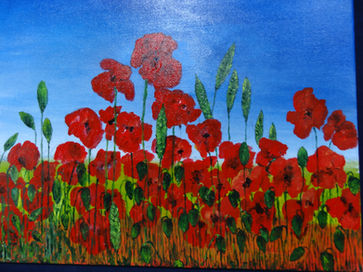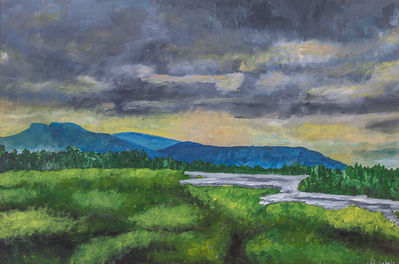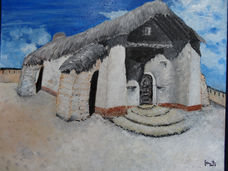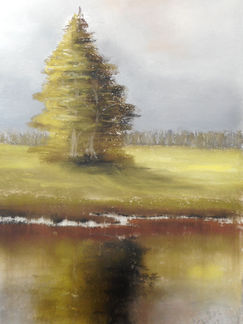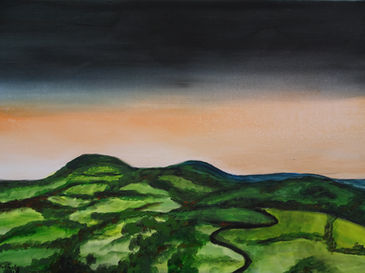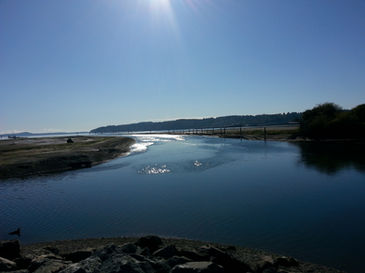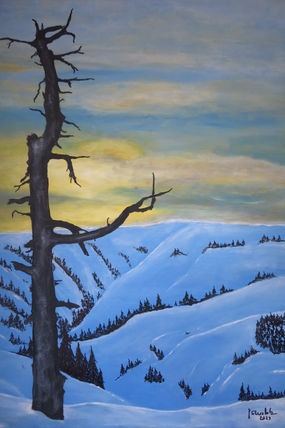Oil Versus Acrylic
The discussion on oil versus acrylic paintings will probably never end. Much has been written about the difference between the two in terms of paint quality, archival life of paintings, and their market value. Scientific research comparing the two paints under controlled light, temperature and moisture tests, clearly show that there is very little difference between the two and therefore no substance to arguments in favour of oil being superior to acrylic. The choice of paint to use is purely a matter of personal taste, as is the choice of the buyer of a painting. Oil has been around much longer than acrylic. There was no other option for old masters but oil to use for their work. I am convinced if Rubens or Rembrandt would have had access to acrylic in their time, they would have used and liked it instead of spending hours on producing pigments and preparing their paint.
I personally prefer to work with acrylics for many reasons. It comes in all thinkable shades, hues, and colors if you don't care to mix your own -which is easy enough to do. Acrylic paint is water soluble, dries fast, and easy to apply layer over layer of paint. If you like the sheen of oil paintings you can achieve the same effect using one of the many acrylic varnishes available on the market, both in gloss and matte. Undoubtedly acrylic paint has added a new dimension to the art world.
Landscapes, Forests and Other
Having worked all my life as a professional conservation ecologist travelling the world trying to protect representative samples of ecosystems in over fifty-five countries, I have come to appreciate the beauty of nature in all its glory! The diversity of ecosystems and their changing seasonal appearance have always fascinated me. A sandstorm in the Sahara, snow covered mountains of the cold north or the Himalayas, calm sand-dunes in an early morning light in the Atacama desert, open tundra in early spring, grass covered plains dotted with volcanoes of the southern Cordillera, the Amazon jungle, the incredibly diverse sea-scapes lining our oceans, the African savannah, Mongolian steppe, Russia's taiga forest, the rolling hills of the Caribou Chilcotin, or the beautiful coastal forests of British Columbia: there is no end to the lasting impressions which continue to shape my work. My paintings are done from memory, based on scetch-pad drawings, and photos taken during my travels for work and pleasure.Whether painting in nature or the studio landscapes , forests and trees are still my favourates.
Climate and War Refugees
The effects of climate change and global warming have become visible in all parts of the world. Most frightening are the exponentially growing numbers of displaced persons, forced to leave their ancestral homes due to droughts that transfer fertile lands into deserts, floods, land-slides, and most terrible climate caused wars. Meanwhile rivers and lakes have dried up. Even some fossil water reservoirs, the lifesaver of many countries, have gone dry. And the worst is still to come.
Living half the year in Central Europe I have seen first-hand the stream of desperate people fleeing their homes in search of a place where they can establish a new life. The scenes experienced along the doors of Europe with refugees desperately trying to escape wars, famine and unbearable poverty are heart-wrenching. Thousands of people are drowning in the Mediterranean Sea being well aware of the risk they are taking crossing the waters in unsafe and over-crowded boats.
Against this background I have dedicated an entire series of paintings to the terrible things reported on in newspapers, on television or seen with my own eyes. The misery of such poor people is overwhelming.
City Life and Buildings
Pastels
Painting with pastels is a relatively new addition to the mediums I am accustomed to. I was introduced to this new technique only recently by a close friend of mine, an accomplished pastel painter. Pastel working is fun; for one, you can stop working on a half-finished piece at any time, and continue any time to change or alter it, easily!
Also pastel is known to be the most permanent medium of all. Its pigments are the purest and longest lasting since it does not have a liquid binder which may cause colors to change over time, either fading or cracking. A wide range of color sticks to choose from, easy to transport and to work with in open air, a variety of paper to work on, great for sketches to finish later in your studio, no drying time, and best of all: seeing the results immediately.
Drawing with Charcoal
One of the first techniques young artists learn about is drawing with charcoal. I first started working with it during my High School years and have used it off and on ever since. Charcoal has a unique look and texture, and is ideal for experimenting. You can produce sharp lines, smudge it with your fingers, set highlights and shades, draw hard lines and much more. Charcoal is in-expensive, easily available, and easy to take on trips; simply put: it is one of the most versatile and rewarding medium, one of my favourites amongst the many different types of pencils, chalks, and crayons.
Mixed Subjects
Paintings 2018
Paintings 2019

Paintings 2020-2021

Paintings 2022-2023

Paintings 2024

Paintings 2025













